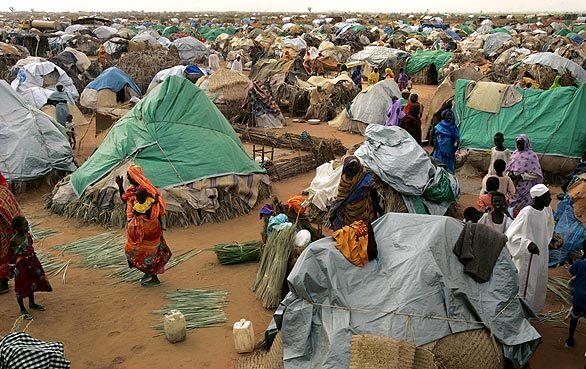Darfur timeline

The Otash camp on the edge of Nyala, in Darfur, is pictured in 2004, the year that then-Secretary of State Colin Powell said genocide had been committed in the Sudanese region. (Carolyn Cole / Los Angeles Times)

Residents of a Darfur village said in 2004 that militia fighters and government soldiers attacked three times, killing more than 100 people. Bombs were dropped on the village and many of the stalls in the marketplace were burned. Sudanese Liberation Army rebels took control of the village, which by then was nearly deserted. (Carolyn Cole / Los Angeles Times)

In April 2007, a survivor of the violence in Darfur who gave his name as Ibrahim holds skulls at the site of a mass grave where he said the remains of 25 of his friends and fellow villagers lie outside the town of Mukjar, Sudan. In July 2007, Sudan accepted a combined United Nations and AU peacekeeping force of up to 23,000 troops. (Nasser Nasser / Associated Press)

In July 2008, a Rwandan soldier serving with the U.N.-African Union Mission in Darfur stands guard next to a helicopter in a village in North Darfur, Sudan. In the same month, the International Criminal Court’s chief prosecutor filed charges of genocide and crimes against humanity against Sudan’s president. (Stuart Price / AFP/ Getty Images)
Advertisement

In his first public appearance after being named a war crimes suspect by the International Criminal Court, Sudanese President Omar Hassan Ahmed Bashir waves as he arrives for a ceremony to sign Sudan’s new electoral law in Khartoum, the capital, in July 2008. Sudan’s government is now attempting to persuade the U.N. to postpone the ICC genocide prosecution against Bashir. (Philip Dhill / EPA)







